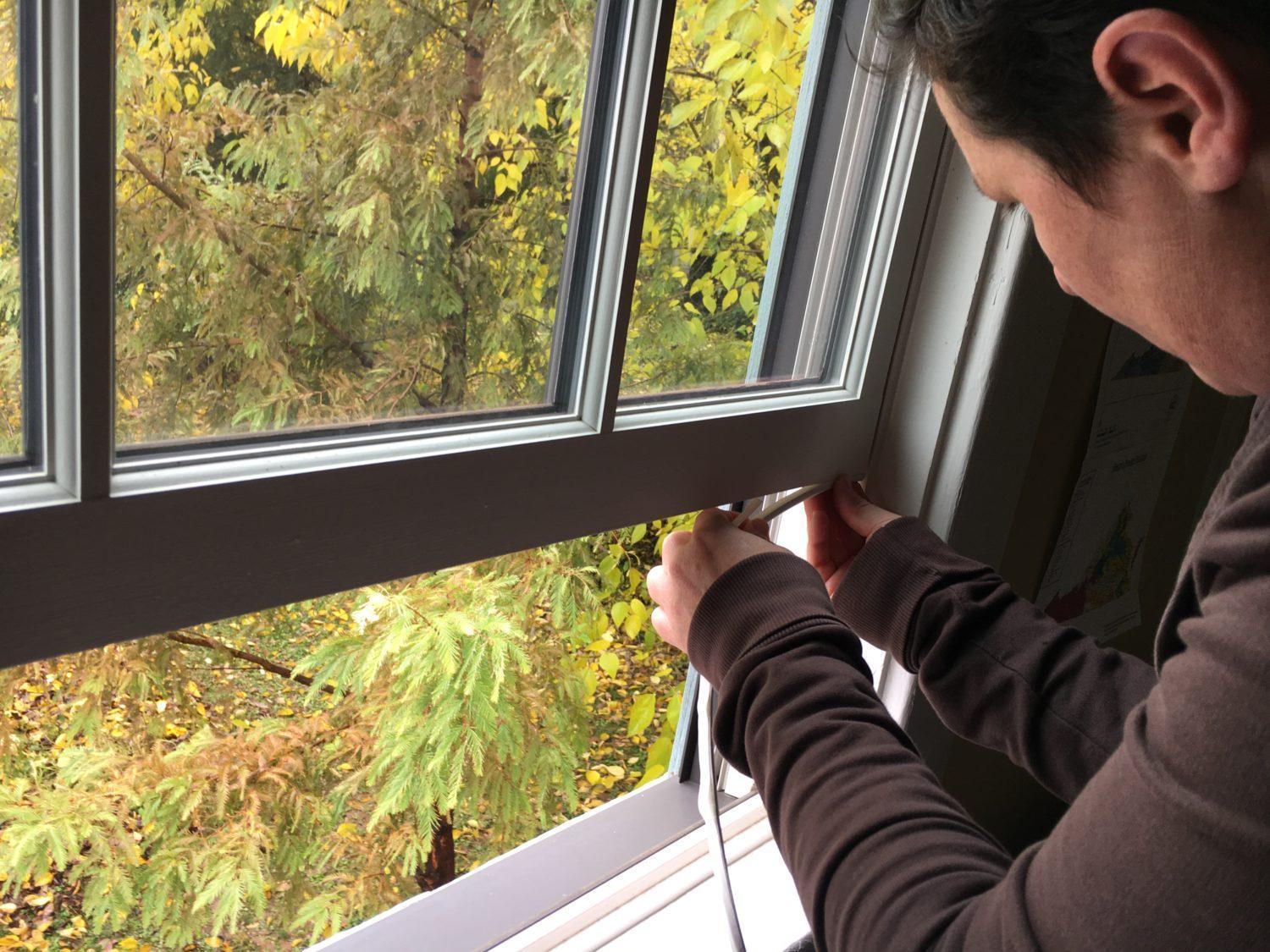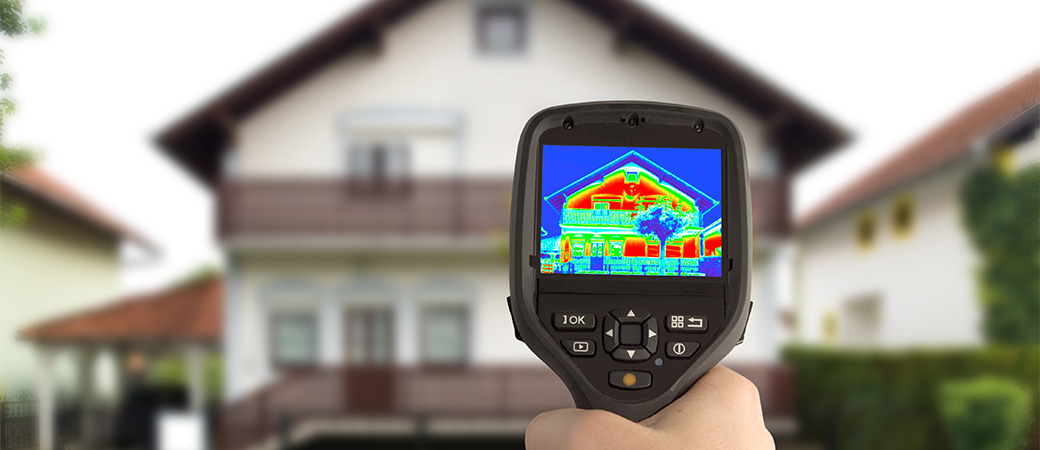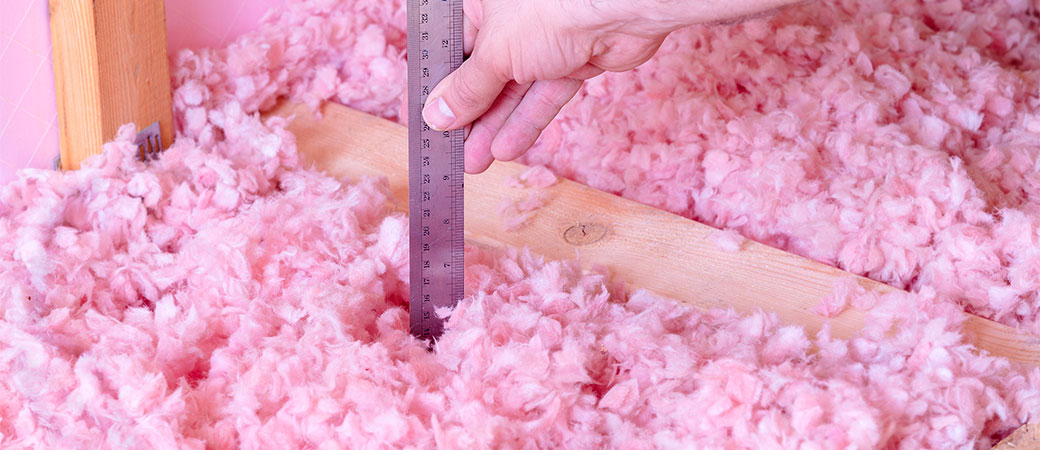According to the Department of Energy, drafts can waste 5% to 30% of your heated or cooled interior air; that’s energy and money down the drain. A little weatherproofing goes a long way, and the good news is there are some super easy and inexpensive ways to reduce drafts around windows and doors.
Weather stripping
With a variety of easy-to-apply options to choose from, weather stripping is one of the easiest ways to cut drafts around windows.
Pressure-sensitive, adhesive-backed foam tape is probably the most common, affordable, and simplest weather stripping to apply. Pick a warmer day to apply it as the adhesive forms a stronger bond at a temperature of at least 60°. Clean and dry the top and botto m of the window sashes. Then simply cut the tape to the lengths needed and apply.
m of the window sashes. Then simply cut the tape to the lengths needed and apply.
It usually lasts up to five years. If older weatherstripping is falling off, deteriorating, or if the foam has lost its resilience and no longer springing up to fill the gap, it’s time to replace. And don’t forget to lock your windows for a tight seal!
Vinyl V strips are effective for sealing any gaps between window sashes and frames, on both the top and sides of a wood window frame. One side attaches to the window frame and the other side folds in when the window is closed. They are also simple to install with their adhesive backing.
Similar to adhesive-backed foam tape, felt strips are another weatherstipping option that come in rolls of varying lengths, widths and color. It is usually nailed in place, but there are also adhesive-backed versions. EPDM rubber weatherseal tape is a slightly more expensive option but more durable than foam weather stripping.
Doors
Adhesive-backed foam tape and felt strips are an easy option for doors too, but the better way to go is a metal flange with a vinyl bulb that is screwed inside the door frame. It takes a little more effort but is much more durable on a door that is open and shut many times a day, and the seal is better.
Complete your door weather stripping with a door sweep. Sweeps go on the bottom of the interior side of an in-swinging exterior door to seal the air gap between the door and the threshold. There are two main types, u-shaped sweeps that slide under aluminum or steel doors and metal strips that screw, nail or staple to the door bottom.
Spray foam and caulk
Foam and caulk may be more intimidating for a beginner DIYer but with a little prep and a steady hand, they are both good options for cracks and gaps around (not inside) window and door frames. For cracks 1/4 inch wide or less, use paintable water-based latex caulk for most surfaces and silicone-based caulk for metal and glass surfaces. Silicone caulking cannot be painted. All caulking periodically needs to be reapplied, especially if the window area is subject to expanding and contracting.
Expanding foam is good for large, accessible gaps because with the long nozzle the foam can expand to fill areas you can’t reach by hand. The key of course, is to not overfill as the foam hardens quickly and is very hard to remove, so take it slow and steady.
Thermal curtains and blinds
Thermal curtains are much thicker than ordinary ones and some have tie-backs to hold them against the wall, further blocking air infiltration. Curtains should reach to the window sill or floor, be hung close to the window, and cover the entire window. When drawn during cold weather, the Department of Energy estimates they can reduce heat loss from a warm room up to 25%.
In winter, close all draperies at night, but open them during the day if the window receives direct sunlight. Additionally, make sure any drapes or curtains (and furniture, too) are not blocking air registers to allow for free circulation of heated or cooled air from your HVAC system.
Pleated, or honeycomb, blinds are another energy-saving window treatment option. Single honeycomb shades add an insulation value around R-2. Double-layer honeycomb shades can reach R-5, blocking up to 62% of heat transfer through windows. More translucent colors that allow some natural light to enter can be used with thermal curtains for even more energy savings.
Draft stoppers
This decidedly low-tech option is also the most flexible. Plenty of cute draft stoppers can be found online for $10 or less, or you can make your own by filling a long sock with quilt batting or polyester fiberfill, and adding some popcorn or dried beans for weight. Simply put your draft stopper at whichever door or window sill that needs a draft blocked.
Whether you do it yourself or hire someone, taking a little time to weatherproof your windows and doors before the really cold weather sets in will pay off big time in comfort and savings.





